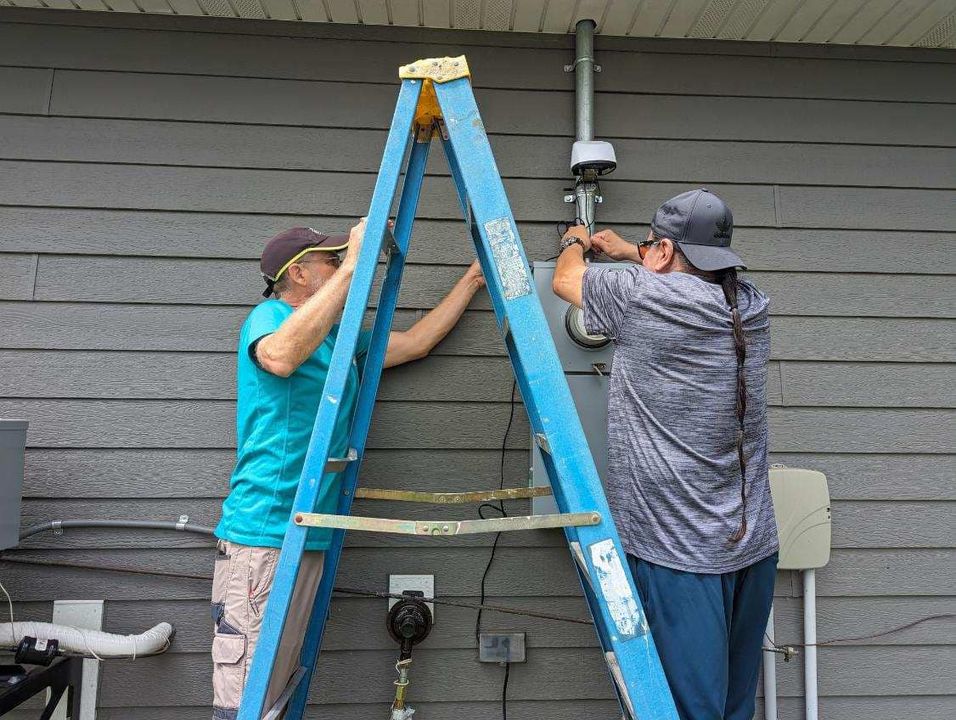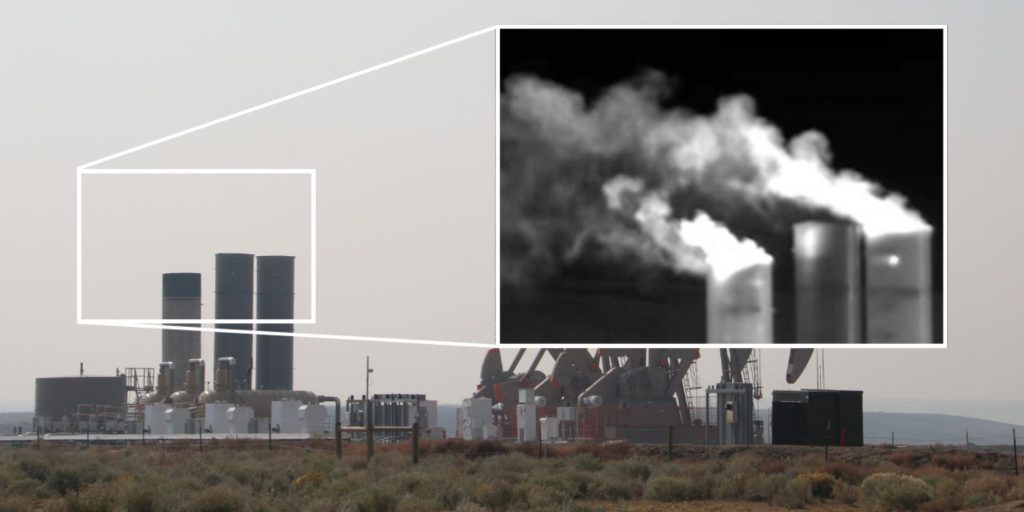In the heart of North Dakota’s Bakken oil play, residents of the Fort Berthold Reservation have been dealing with high rates of respiratory diseases. Now they may have the data to protect themselves.
This article originally appeared in WORC’s newsletter, the Western Organizing Review. To get more stories like this, sign up for our newsletter here.
A long-time goal for Fort Berthold Protectors Of Water and Earth Rights (FB POWER) has finally been reached, as 8 ambient air monitors were installed across Fort Berthold Reservation.
“In our commitment to safeguarding community well-being and the environment, DRC and Ft. Berthold POWER installed air monitors at key locations within the reservation,” said Delvin Rabbithead, Sr., President of Ft. Berthold POWER.
The road to this accomplishment is long and would not have been possible without the work of past and present Dakota Resource Council staff and members..
The Mandan, Hidatsa and Arikara (MHA) Tribes, now the MHA Nation, have lived in western North Dakota since time immemorial. The histories and creation stories that are central to each of these nations’ worldview are felt deeply by the people and connects them to the earth. Another common truth for the MHA Nation is their complicated, and more often than not, damaging relationship with the United States Government and settler colonial people who have been a part of their history since the 1600s.
“In our commitment to safeguarding community well-being and the environment, DRC and Ft. Berthold POWER installed air monitors at key locations within the reservation. These monitors, designed to track various emissions from flaring and other activities, will help us understand what we breathe every day.”
Delvin Rabbithead, Sr., President of Ft. Berthold POWER.
There are many aspects to this history that affect the MHA Nation today, but one of the most significant was the construction of the Garrison Dam, built between 1946 and 1953. The project, which dammed the Missouri River, flooded the capital city of Elbowoods along with six other thriving, self-sustaining communities. The flooded heart of the river valley, characterized by fertile farmlands and riparian forest, was home to over 1700 Tribal citizens. Once the dam was completed, the people were flooded out and were forced to build a new capital, aptly named New Town. Having lost their homes, the families were forced to relocate to the arid high prairie, which doesn’t offer anywhere near the fertile river delta lands of their former home. Apart from the immeasurable grief that accompanied forced removal, the MHA Nation also lost the land that provided food and economic security.
Keep up to date with grassroots organizing in the West with WORC’s newsletter.
FB POWER arose in response to the Bakken oil boom and thousands of oil wells being drilled on Tribal land threatening clean water and air, and impacting human health.
Collaborating through RE-AMP, an organization with the goal of equitably eliminating greenhouse gas emissions in the Midwest by 2050, The Ecology Center of Detroit, and Colorado State University (CSU), eight air monitors were installed within the boundaries of Fort Berthold Reservation. Oil and gas impacted community members from Detroit came and met MHA citizens to learn what life in the Bakken is like. In October 2023, members of DRC and FB POWER visited Detroit to learn about the industrial refinery that impacts the Detroit group in this interstate partnership.
“Currently, eight monitors have been deployed across seven locations, including Nueta Hidatsa Sahnish College in New Town, Four Bears Segment, Mandaree, Twin Buttes, and Parshall,” Rabbithead said. “These monitors, designed to track various emissions from flaring and other activities, will help us understand what we breathe every day.” Five of the monitors report, in real time, measurements of particulate matter (PM), ozone, carbon monoxide and dioxide, and sulfur and nitrogen dioxides. One monitor yields real time VOC measurements, and also has two canisters attached, one that will draw a sample over a week’s time, the other which will sample the air when triggered by particularly bad air. When full, the canisters will be replaced, and the full ones will be sent to CSU to be analyzed for specified (individual) VOC levels. The monitors also include an ozone monitor and two PM monitors.

A public dashboard provides community members and the general public with the air monitor readings in real time. The data from the canisters will be analyzed after three months of sampling.
The data will be used to educate people about what is in the air they breathe, how that affects their health and that of the environment, and how they can pressure decision makers to make stronger rules and regulations that better protect them. There is also a push by residents to get monitors installed on their homes.
Learn more:
A new dawn for oil and gas protections in Colorado
Did North Dakota Regulators Hide an Oil and Gas Industry Spill Larger Than Exxon Valdez?

Yes, I want to help WORC elevate Western voices and hold decision-makers accountable!





